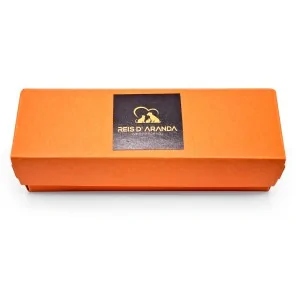Its name says it all: the Vienna blue rabbit comes from Austria. Not only is it beautiful with its shiny blue-grey...
DO SMALL PETS ATTRACT WILD RATS?
INTRODUCTION
Wild rodents are abundant in both rural and urban areas, and in some areas, over 90% of farms are infested with rats and mice. These pests contribute to the spread of pathogens in livestock, creating an epidemiological bridge between animals and humans, and we have often encountered the comment that small pets attract them.
This is not true and always has to do with our own habits, cleanliness and pest controls carried out in the sewage system.
I HAVE A RABBIT, GUINEA PIG OR HAMSTER, WILL THAT ATTRACT RATS?
No, rabbits, guinea pigs or hamsters do not attract wild rats. Rats will go where there is plenty of food available and places to sleep or hide that are safer than sewers or the street. But the presence of these pets will not attract them like moths to the light, it is more of a human factor.
DOES KEEPING RATS AS PETS ATTRACT OTHER RATS?
No, it doesn't. It's the same as with rabbits, guinea pigs or hamsters; it's like saying that keeping dogs in the house brings in wolves!
IS IT DANGEROUS TO LET STREET RATS INTO THE HOUSE?
Of course, wild rats carry various diseases and internal or external parasites that can be passed on to humans or their pets, but it is also the pets that can be the worst off as they can be attacked or eaten by rats in the worst case scenario.
The most common infections and diseases are:
BARTONELOSIS: Bacteria of the genus Bartonella are responsible for a wide group of emerging and re-emerging infectious diseases. Bartonella bacteria can be carried by rodents and cause a wide range of symptoms and clinical pictures such as endocarditis, prolonged bacteraemia, bacillary angiomatosis, Carrion's disease, etc.
SALMONELLA: Rodents can be carriers of Salmonella bacteria that affect both humans and domestic animals. Infection is caused by ingesting food or drink contaminated with rodent faeces.
The most common source of infection is food contaminated with farm animal faeces. Symptoms appear 12 to 72 hours after infection and include: Diarrhoea,fever,vomiting or abdominal pain.
LEPTOSPIROSIS: Leptospirosis is an infection caused by bacteria species of the genus Leptospira and is transmitted through the urine of infected animals, including rodents, cattle, pigs and dogs. It is most common in tropical areas.
Symptoms of leptospirosis can manifest from 7 to 14 days and include flu-like symptoms of medium to severe severity, including: Headache, chills, muscle pain, nausea, vomiting, red eyes, diarrhoea and rash.
WEIL'S DISEASE: In 10% of cases, a more severe form of the disease, known as Weil's disease, develops. This variant can cause organ failure, internal bleeding and death. Symptoms include: Jaundice, swelling of ankles, feet or hands, chest pain, symptoms of meningitis or encephalitis, such as headaches, vomiting and convulsions or coughing up blood.
BITE FEVER: Rat bite fever can be caused by two bacteria, Streptobacillus moniliformis and Spirillum minus. When rodents become infected, the bacteria are present in the rodents' faeces and urine and in secretions from the mouth, nose and eyes.
Symptoms include fever, vomiting, muscle pain, headache, joint pain, rash, etc.
PLAGUE: Plague is caused by the bacterium Yersinia pestis. Rodents, such as rats, carry this disease. It is spread by their fleas. People can get plague when they are bitten by a flea that carries the plague bacteria from an infected rodent.
The symptoms that occur depend on how the disease was transmitted:
- BUBONIC PLAGUE: the most common sign of bubonic plague is swollen and painful lymph nodes (buboes), where the bacteria multiply and from where they can spread if left untreated. There may also be sudden febrile symptoms, and extreme weakness.
- SEPTICEMIC FEVER: febrile states, extreme weakness, diarrhoea, delirium, abdominal pain, shock and bleeding of the skin and other organs. Skin and other tissues may turn black and die, especially fingers, toes and nose.
- PENUMONIC PLAGUE: febrile states, shock and pneumonia, causing breathing difficulties, chest pain, cough and blood in the mucous membranes.
HANTAVIRUS: Hantavirus (HV) is an emerging zoonotic disease transmitted by rodents, including mice and rats. It is characterised by symptoms of fever, myalgia and gastrointestinal complaints, followed by sudden onset of respiratory distress and hypotension.
TULAREMIA: Tularaemia is a very rare infectious disease that usually attacks the skin, eyes, lymph nodes and lungs. Tularaemia is caused by the bacterium Francisella tularensis. The disease mainly affects rabbits, hares and rodents, such as muskrats and squirrels.
TOXOPLASMOSIS: Toxoplasmosis is a common infection caused by the protozoan Toxoplasma gondii. The main host is the domestic cat, but rodents and other small animals are intermediate hosts, passing the parasite when they are eaten by cats.
This parasite decreases the aversion of mice and rodents to a wide range of threats, making them more vulnerable.
TENTIA: Like most animals, rats can be affected by intestinal parasites, such as tapeworms and worms. Tapeworms are the main intestinal parasite that rats can transmit to humans, mainly through contact with faeces infected by their eggs.
Upon entering the human body, tapeworms often develop extensively and rapidly, which can lead to nutritional deficiencies, loss of weight and appetite, anaemia and anorexia in more severe cases. It includes symptoms such as abdominal pain, enteritis, diarrhoea, loss of appetite, restlessness, irritability, feeling unrested after sleep, anal and nasal itching.
HOW CAN I PREVENT WILD RATS FROM ENTERING THE HOUSE?
There is a direct cause between the appearance of rats and mice and the dirtiness of an unclean house, so don't make it easy for them!
Rats, like any animal, prefer to have their burrow in a safer and more comfortable place for their young, and where food is guaranteed.
We recommend:
- Keep the house clean and tidy: The accumulation of dirt and uncontrolled accumulation of junk, clothes, paper, etc. can serve as a source of food and shelter for rodents.
- Store food in closed, sturdy containers or cupboards, cleaning and removing food waste.
- Store rubbish in sturdy, closed, airtight containers.
- Check heat sources such as heating, water heaters, cookers.
- Proper design and maintenance of drains and sewage systems to avoid attracting rodents.
- Barriers along cables and pipes to prevent rodent passage.
- Holes and cracks should be sealed with rodent resistant materials.
- A constant level of cleanliness should be maintained, especially in areas where food is handled and/or consumed (canteens and kitchens).
- Where food is stored (pantries and kitchens), reposition every 2 months and insulate in such a way that they are not accessible to rodents.
- The doors and windows of the building must be made of rodent-resistant material to prevent rodents from entering.
- Rooms, children's classrooms... should be as empty as possible of school material, books, toys, stuffed animals... to avoid accumulations that can be used as hiding places. Do not store food in them, even if they are in closed plastic jars. Keep plasticine, crayons, cellulose material (toilet paper, wet or dry wipes, etc.), glue, etc. in sturdy airtight boxes.
CONCLUSION
It is not small pets that attract wild rats, but dirt and an abundance of food and hiding places.
If we suffer from a plague of rats at home we must put limits and solutions as soon as possible, going to a pest control company to carry out the appropriate treatment depending on the seriousness of the matter.
Leave a comment
Log in to post comments
















